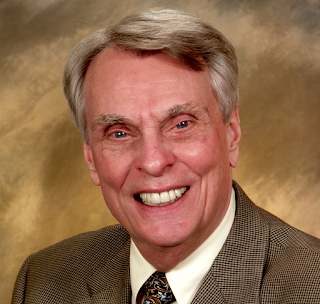We were pleased that Radio World featured our review of Radio…My Love, My
Passion
by Marlin Taylor in their April 11, 2018 print and digital editions.
We appreciate kind assistance from Paul
McClane and Emily Reigert.
Taylor is the guy who invented modern
Beautiful Music and programmed it at WHFS, WDRV (now WBEB), WRFM, WBCN and
global program syndication.
Radio…My Love, My Passion is available now at Amazon [link]
and from the author at [link].
Autographed copies are available from Taylor.
_________________________________________________________________
 |
| Marlin Taylor |
You may not know Marlin
Taylor’s name but you know his work. Taylor is one of the radio industry’s
Greatest Generation, the men and women who built the stations and formats after
World War II. Taylor has been called The
Father of Beautiful Music because of his groundbreaking work creating and
marketing the format.
Taylor’s new book – Radio…My Love, My Passion – is not only his
personal story, it is a behind the scenes account of the birth and
proliferation of the radio format known as Beautiful
Music, Good Music, Easy Listening Music and even Elevator Music. Whatever you call it, Taylor
was an architect who changed the face of radio programming. He brought enjoyment to millions of listeners
worldwide.
Radio…My Love, My Passion is scheduled for release on March 20, 2018. Taylor’s
book is an essential addition to any radio fan’s library. The book is a
must-have for scholars.
Taylor gets the story started
by talking about his childhood in suburban Philadelphia. We learn about his
first job in radio followed by his stint in the Army. Taylor invented his first
radio format while he was stationed in Thule, Greenland.
In early 1961 Taylor was in
his final months of duty at Fort Meade, near DC. He was about to get married
and needed to find work.
In a career changing moment, Taylor
describes seeing an ad in Broadcasting
magazine. A new FM station was being built in Bethesda, Maryland and they
needed a Program Director. The station was the legendary WHFS. After all the
call letters stood for “Washington’s High-Fidelity Station.”
The FCC had recently
authorized FM stereo transmissions. Taylor’s job was to find high fidelity
music that showcased the stereo effect. WHFS signed on in November 1961.
In Radio…My Love, My Passion Taylor describes how he built the music
library. He was in constant contact with record labels such as Columbia,
London, and RCA Victor. He urged them to release more stereo LPs.
In the summer of 1962 he developed
Stereo Notes, a newsletter for stereo
music fans that increased tune-in to the station.
In the book, Taylor talks
about the elements and criteria for the Beautiful
Music format. He intuitively knew the importance of making a good first
impression. Taylor built Beautiful Music
they way an architect might plan a structure. Everything part of the format had
to be impeccable. Taylor put these skills to good use in coming years.
In February of 1963 Taylor
became aware of a new FM station being planned for Philadelphia, his hometown. David
Kurtz owned the FCC construction permit for what became WDVR. Kurtz hired
Taylor to program the station. It was being constructed on a shoestring budget/
WDVR was being built on a
shoestring budget. Readers will learn
how Taylor met Jerry Lee who was hired to be the Sales Manager for WDVR. The
station signed on May 13, 1963. The entire operation occupied four rooms.
Programmers will love reading
about the “science” of Beautiful Music. about
Taylor’s format was based on instrumental versions of popular songs. He tells about constructing quarter-hour
“sets” of music, often arranging songs by mood and tempo.
The assassination of
President John Kennedy on November 22, 1963 caused a major change in the
presentation of Beautiful Music. Up
to that point every voice heard on WDVR was prerecorded. When the shots rang
out in Dallas, WDVR was caught with no way to report the story. From that point
on, Taylor insisted on having live, local announcers whenever possible. This human
touch became another signature of his format.
Then readers are taken on
Taylor’s rise to the top of the business. In 1966 he was hired by T. Mitchell
Hastings to program The Concert Network: WBCN, Boston and WHCN, Hartford. The are
several priceless anecdotes about the eccentric owner.
Taylor tells of building WJIB
in Boston. Then he moved to WRFM in New York. On WRFM the Beautiful Music format struck gold. By the fall of 1970, according
to the Arbitron ratings, WRFM was the number two station in the nation’s
largest market. Taylor was on a roll.
WRFM’s owner Bonneville
Broadcasting loved Taylor’s Beautiful
Music format. They decided to syndicate it nationwide. Beautiful Music
went global when stations in the UK, Australia and Europe signed on.
But, Taylor’s good fortune changed
in the late 1980s. Changes in lifestyle and music meant changes in priorities
for radio ad buyers. They wanted to reach younger demographics. Beautiful Music stations began switching
to Adult Contemporary and Soft Rock formats. These format changes became a wave
and the market for Beautiful Music
vanished quickly.
Taylor left in 1988 and
Bonneville sold the format in 1993.
Taylor describes being out of
work, a new experience for him. One
night he prayed:
“God, please grant me the opportunity to have one more
grand gig in this industry that I love before I am too old and feeble
physically and mentally to handle the challenge.”
The clouds began to part in fall
1998 when Taylor met Lee Abrams, the head of new satellite radio broadcaster XM
Radio. XM was still in their development phase at the time. Taylor pitched an
Easy Listening format to Abrams.
In November 2000, Taylor got
a call from Dave Logan, Abrams lieutenant at XM. Logan wanted to offer him a
job programming a 1940s Big Band channel. This wasn’t Taylor’s first choice but
he took the job anyway.
Soon Taylor felt reborn and
his creative juices began to flow again. He built the Big Band channel based on
his experience: The Forties and More...
On Track Number Four! The
channel became a hit for XM. Other projects followed at XM and XMSirius. Taylor
retired from the company in 2015.
Radio…My Love, My Passion is filled with history and anecdotes. You will
recognize many of the people who played roles in Taylor’s work. Marlin Taylor
has done a wonderful job assembling the facts and touching on events that
matter. When you finish reading Radio…My Love, My Passion you will feel
like you know him as a true visionary who changed the radio programming forever.




I would be interested in getting this book. Any radio history would be of interest of myself. He really loved the "pops" music, and it worked for three decades.
ReplyDelete